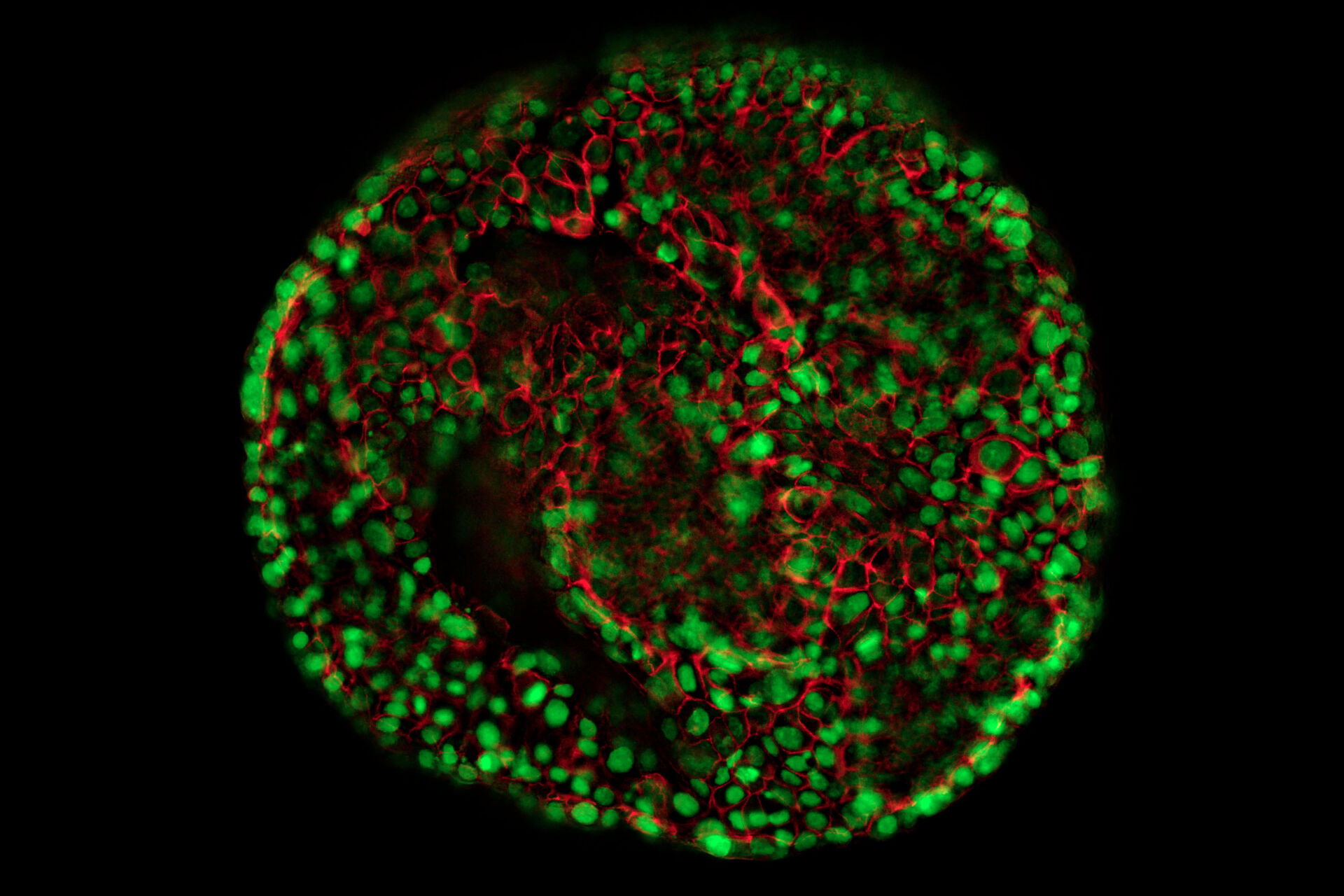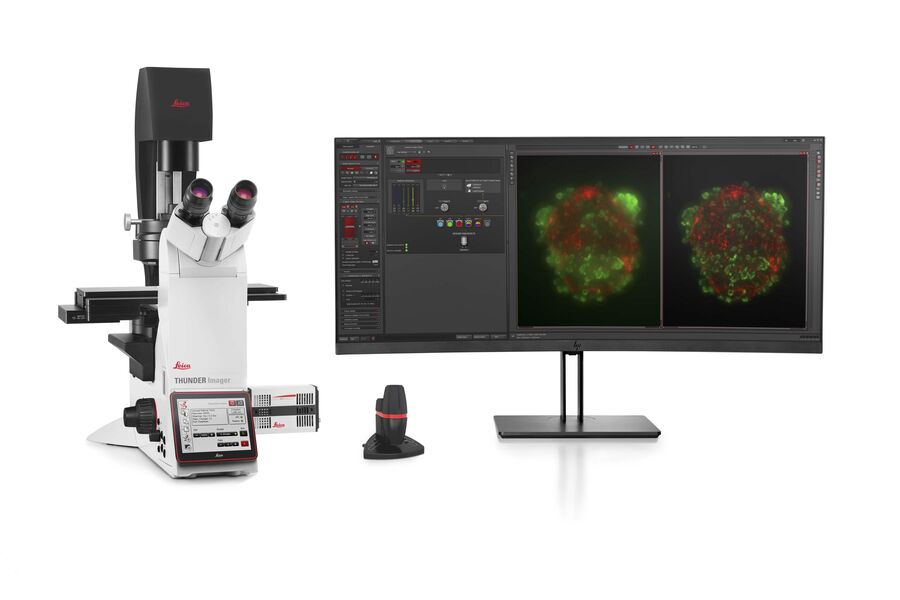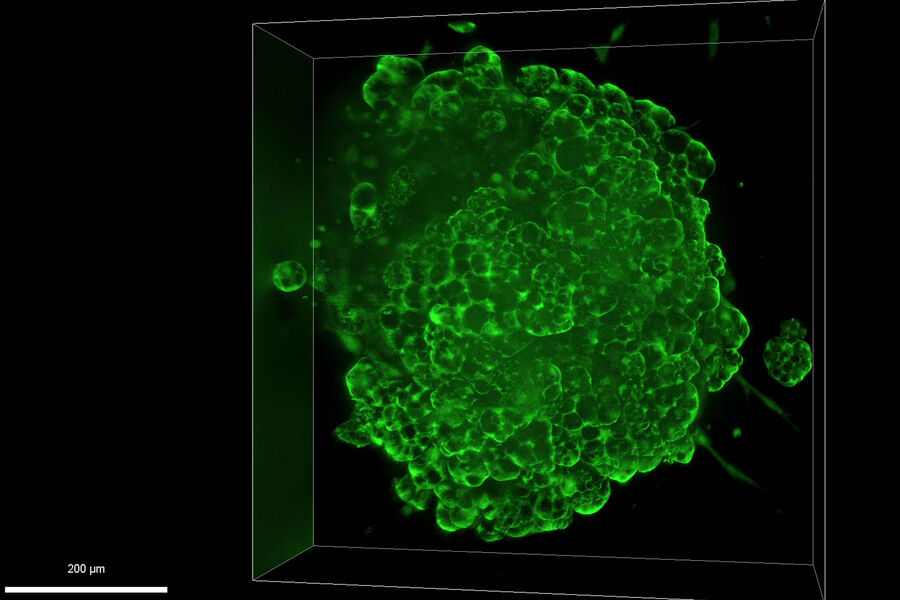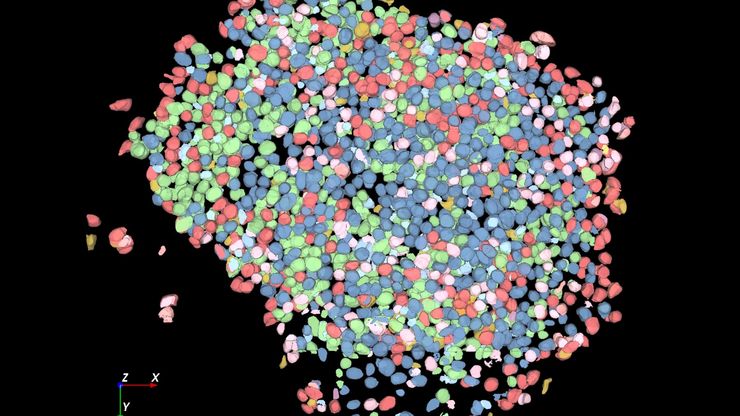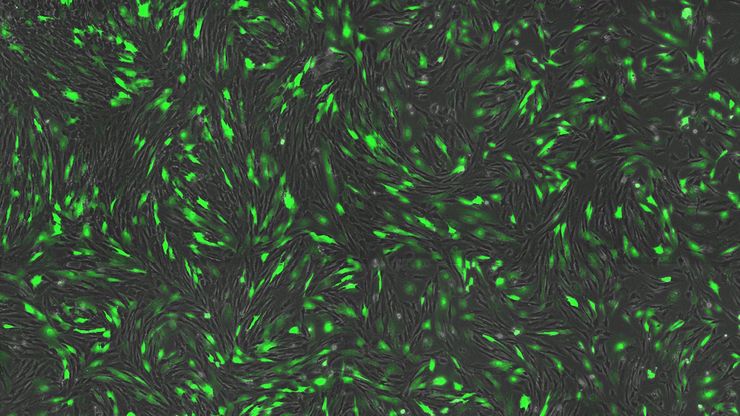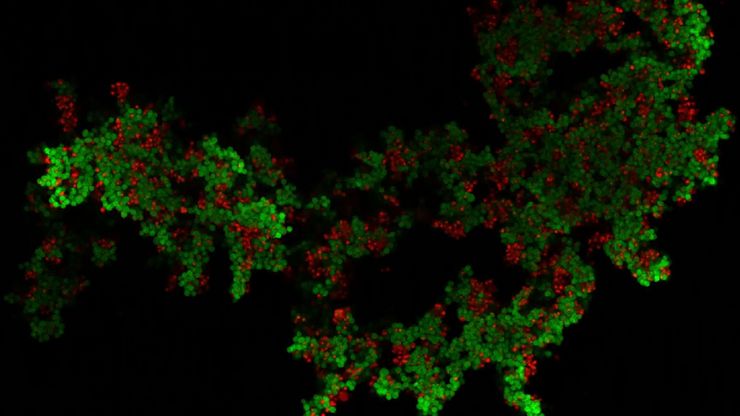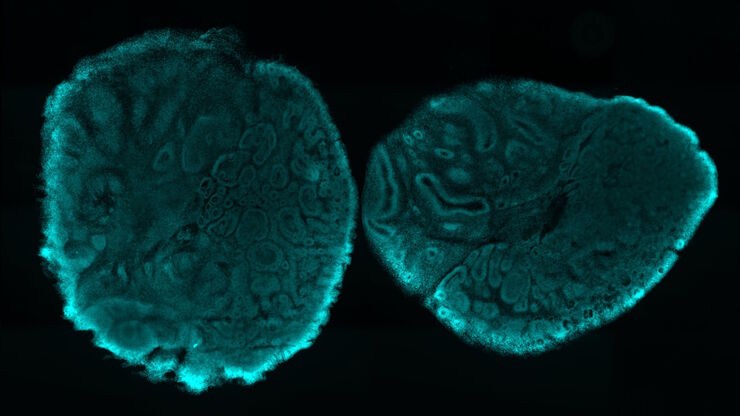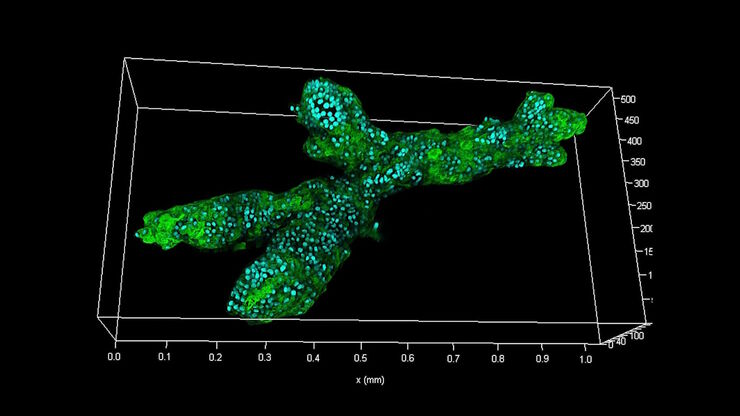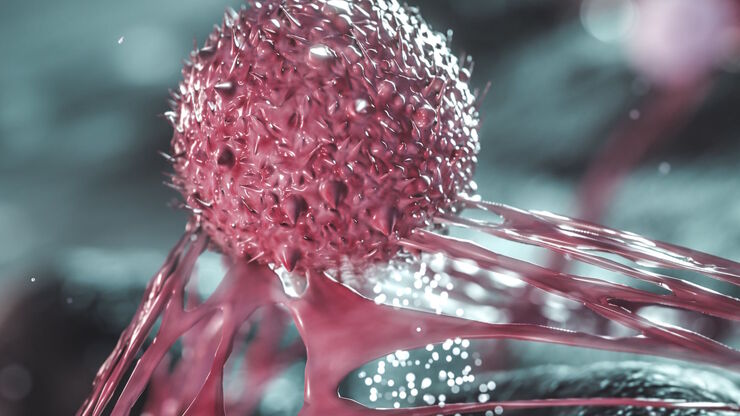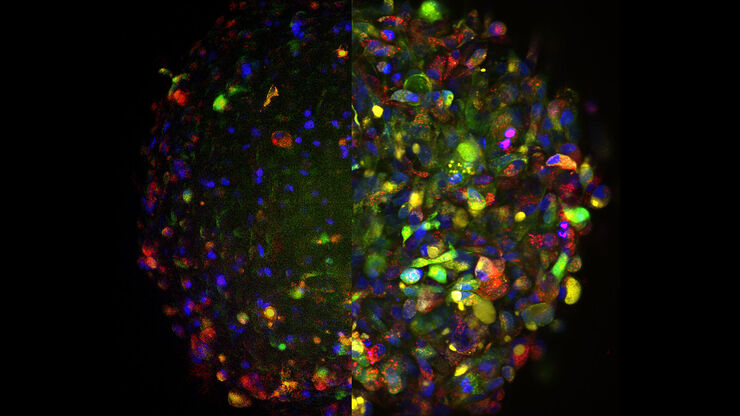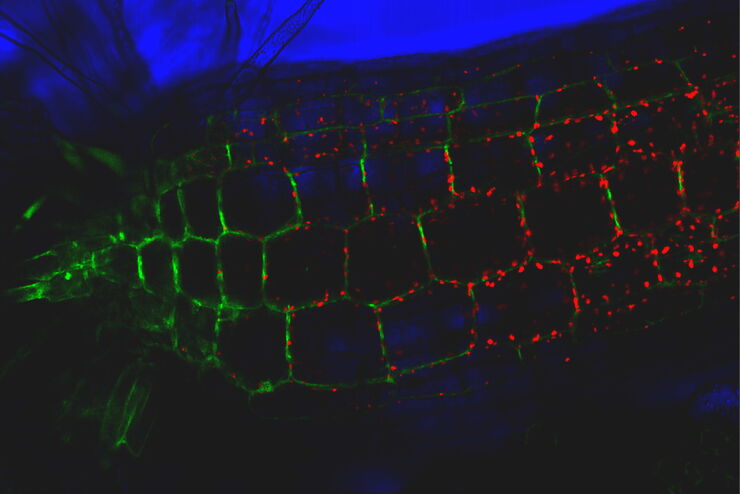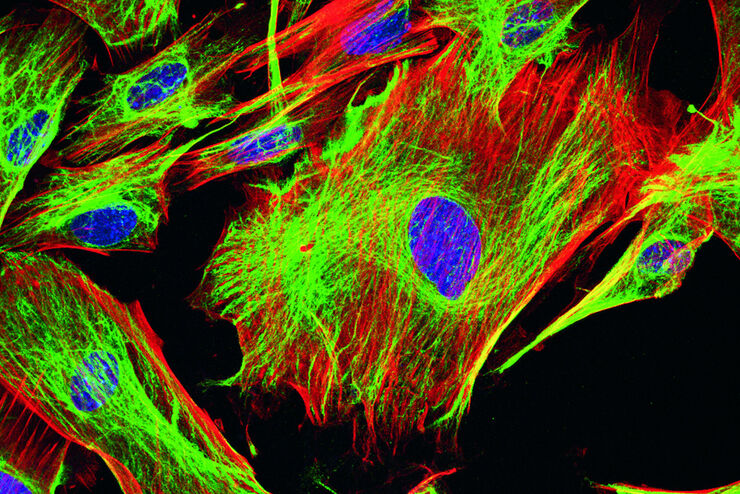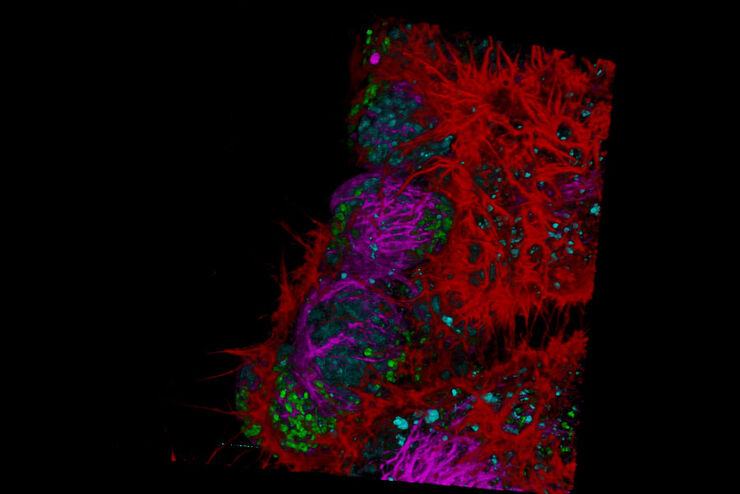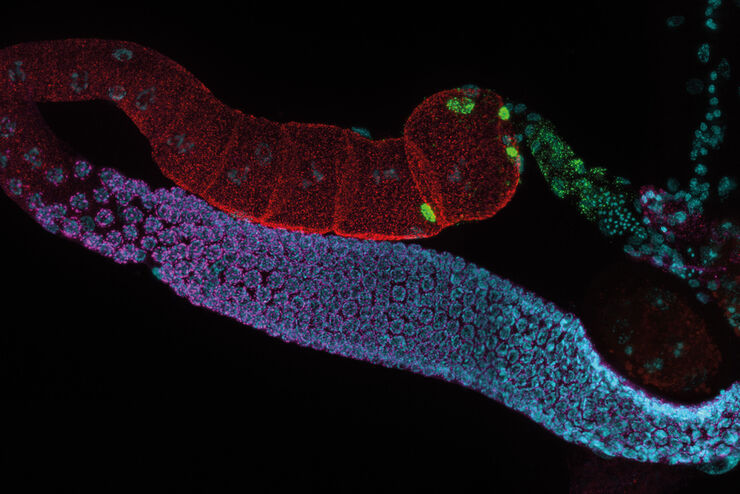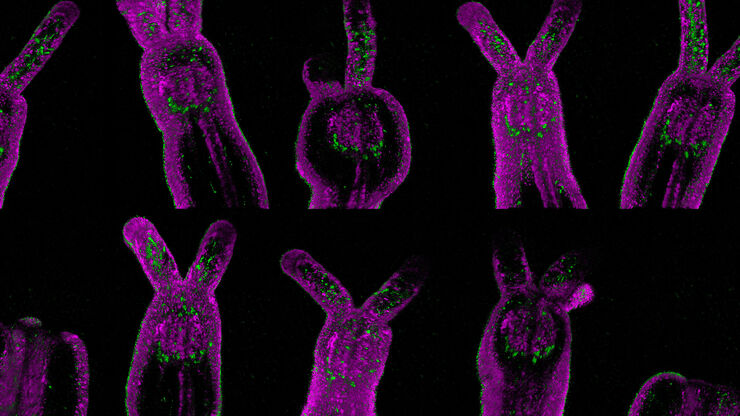Organoide und 3D-Zellkultur
Einer der sensationellesten Fortschritte in der Life-Science-Forschung in jüngster Zeit ist die Entwicklung von 3D-Zellkultursystemen wie Organoiden, Sphäroiden oder Organ-on-a-Chip-Modellen. Eine 3D-Zellkultur ist eine künstliche Umgebung, in der Zellen in allen drei Dimensionen wachsen und mit ihrer Umgebung interagieren können. Diese Bedingungen ähneln denen von In-vivo-Methoden. Organoide sind eine Art 3D-Zellkultur, die organspezifische Zelltypen enthält, die eine räumliche Organisation aufweisen und einige Funktionen des Organs replizieren können.
Organoide bilden weitgehend ein physiologisch relevantes System nach, mit dem Forscher komplexe, mehrdimensionale Fragen wie Krankheitsbeginn, Geweberegeneration und Wechselwirkungen zwischen Organen untersuchen können. Die Lichtmikroskopie ist ein wesentlicher Beitrag zur Untersuchung der mit Organoiden modellierten komplexen Systeme.
Die Bildgebungslösungen von Leica Microsystems unterstützen die Untersuchung dieser multifunktionalen Proben mit Systemen, die eine tiefe und schnelle Bildgebung sowohl für Endpunktmessungen als auch für die Untersuchung der Dynamik von lebenden Zellen ermöglichen.
Unsere Experten beraten Sie gern
Optimierte Effizienz für die Bildgebung bei 3D-Modellen
Leica Microsystems hat eine Reihe von Möglichkeiten entwickelt, die eine höhere Leistung für die Bildgebung von Organoiden und anderen 3D-Zellkulturmodellen bieten.
Von herkömmlichen Methoden wie der Weitfeld- oder konfokalen Mikroskopie bis hin zu fortschrittlicheren Bildgebungsmethoden wie der Multiphotonen- oder Lichtblattbildgebung ermöglicht Leica Microsystems die Visualisierung feinster zellulärer Details sowie der gesamten Gewebearchitektur in Ihren 3D-Zellkulturen.
Leica Microsystems bietet verschiedene Lösungen für eine einfachere, schnellere und leichtere Bildgebung Ihrer 3D-Zellkulturen.
Herausforderungen der Mikroskopie von Organoiden überwinden
Die Bildgebung ist eine entscheidende Technik für die Untersuchung von 3D-Zellkulturen wie Organoiden und Sphäroiden.
Die effektive Bildgebung von Organoiden stellt neue Herausforderungen, da sie große Volumina umfassen. Organoide können mithilfe von Clearing-Techniken fixiert, immunmarkiert und untersucht werden, um die Visualisierung ihrer 3D-Struktur zu ermöglichen. Normalerweise werden diese Studien mit konfokalen Mikroskopen durchgeführt, da die Abbildung von Kulturen mit mehr als zwei oder drei Zellschichten für Weitfeldsysteme mit einer inhärenten Unschärfe, die das interessierende Signal maskiert, ein Problem darstellen kann.
Organoide können auch zur Untersuchung dynamischer Prozesse verwendet werden. Die Untersuchung lebender Organoide stößt auf typische Bildgebungsprobleme wie Phototoxizität und schlechte Signal-Rausch-Verhältnisse, insbesondere bei der Bildgebung tief in der Probe. Neuerdings werden mikroskopische Methoden mit schneller Erfassung wie FLIM oder Lichtblattmikroskopie für die Untersuchung lebender Organoide bevorzugt, da bei ihrem Einsatz eine Veränderung der Physiologie der Proben vermieden werden kann.
